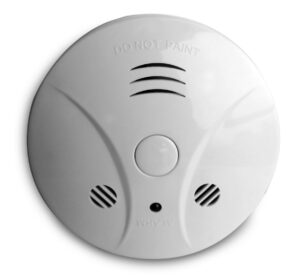When I read or hear of home fire disasters, it affects me deeply. My family home was totally destroyed by fire when I was a child. In the early 60’s, most homes did not have smoke alarms. If my 9 year old brother had not woke my parents and my father had not gone back into the intensely burning house against his neighbors urges to find his toddler son, there would have been fatalities that night.
was a child. In the early 60’s, most homes did not have smoke alarms. If my 9 year old brother had not woke my parents and my father had not gone back into the intensely burning house against his neighbors urges to find his toddler son, there would have been fatalities that night.
It concerns me greatly, with the availability of inexpensive and easy to install smoke detectors, to inspect homes with families and find no working smoke detectors. We are so busy taking care of our families and running from here to there, we sometimes miss the really important and simple things. Having properly placed and working smoke detectors is one of them!
Most smoke detectors in our homes have ionization sensors. These respond to smoke from fast flame fires, such as those caused by petroleum products or cooking oil. The trouble is, many home fires are slow burning smoldering fires and most residential fire fatalities are due to smoke inhalation that occurs at night during sleep.
That is why many fire departments are alerting us that everyone should have a smoke detector that is also equipped with what is called a photoelectric sensor. These sensors respond quickly to smoke. Place at least one of these detectors in the hall by the bedrooms.
In addition, carbon monoxide detectors are critical. I inspected a home recently, where the man said his dog saved him by licking his face. He had left his car running in the garage all night long and probably would not have woken, if not for his dog.
I am a big believer in having a family emergency plan in case the alarms go off. Here are common suggestions for a home fire safety plan:
- Identify an emergency meeting place such as near the mailbox or a neighbor’s house.
- Assign people who are in charge of helping children or infirmed adults out of the home.
- Make sure at least one window is operational in a bedroom.
- Let children know what they should do if they hear the alarm go off. For example- stay in their room, go to the safe place outside if they are old enough- how to open the window.
- Have flashlights ready for this kind of emergency.
- Practice the emergency plan twice a year. Kids will become familiar and will be engaged with the fire drills.
Working with home buyers, we can all encourage this type of safety awareness by verifying these systems are in working order.
By Steve Vacha

